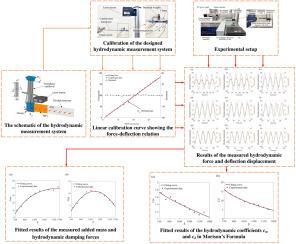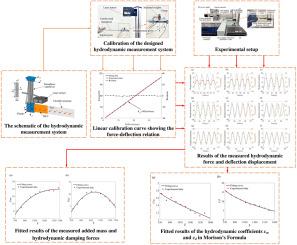Hydrodynamic force characterization and experiments of underwater piezoelectric flexible structure
Abstract
The unsteady hydrodynamics of underwater flexible structures internally actuated by smart materials are drawing growing attention. In this study, the dynamic measurement and characterization of hydrodynamic forces acting on flexible structures actuated by macro fiber composites (MFC) are performed. A measurement system composed of a cantilevered transducer and a laser sensor is proposed for dynamically acquiring the induced hydrodynamic force. The parameter indexes of the measurement system are carefully determined to achieve the requirements of high resolution, high sensitivity and good anti-interference of the designed measurement system. Calibration experiments demonstrate the good measuring performances. Then, the relationship between the hydrodynamic force and the actuation frequency is explored using the data obtained from the designed measurement system. Moreover, by decomposing the measured hydrodynamic force, it is found that the added mass component shares similar behaviors with the hydrodynamic force, whereas the hydrodynamic damping component initially increases and then decreases across the explored ranges. Finally, manageable formulas for these components in the forms of hydrodynamic function are developed, and explicit expressions for the Morison’s formula are obtained. These findings are meaningful for the realization of flexible structures with the actuation of smart materials in marine applications.



 求助内容:
求助内容: 应助结果提醒方式:
应助结果提醒方式:


